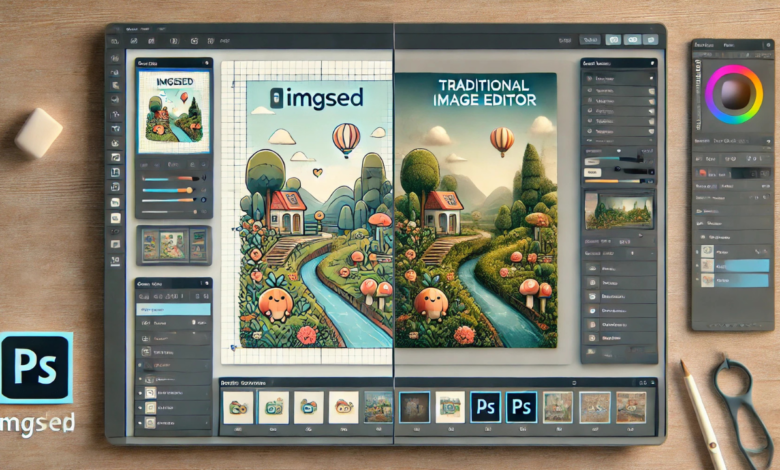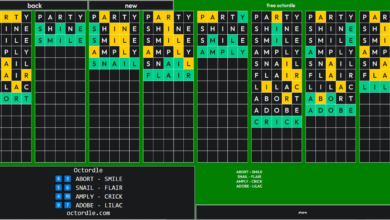Imgsed vs. Traditional Editors: A Comparison of Performance and Features

In today’s fast-paced digital world, image editing has become essential for photographers, designers, marketers, and social media influencers. With countless image editing software options available, it can be challenging to determine which one provides the best balance between performance, features, and usability. Two distinct categories of image editing software dominate the market: newer, specialized tools like Imgsed and traditional image editors such as Adobe Photoshop and GIMP. This article will compare Imgsed vs. Traditional Editors, analyzing their performance, features, user interface, and overall suitability for various tasks.
What is Imgsed?
Imgsed is an emerging image editing tool that provides fast, intuitive, and high-quality image manipulation. It caters to both beginners and professionals, offering a range of features that allow users to quickly edit images while maintaining the flexibility required for complex edits; unlike traditional editors, who can be overwhelmed with advanced features, Imgsed focuses on user-friendliness without compromising the power and precision necessary for professional image editing.
Traditional Image Editors
Traditional image editors like Adobe Photoshop and GIMP have been the go-to solutions for digital artists, photographers, and graphic designers for years. These tools have many functionalities that cater to all editing needs, from basic photo adjustments to advanced digital artwork creation. The primary advantage of traditional editors is their robustness and depth, offering tools like layer manipulation, advanced brush settings, vector editing, and much more. However, they also come with steep learning curves and can be resource-intensive, often requiring powerful hardware for optimal performance.
Performance Comparison
Speed and Responsiveness
One of the most significant differences between Imgsed and traditional editors is their speed and responsiveness. Imgsed is designed to be lightweight and fast, making it ideal for those who need to edit images quickly without being bogged down by unnecessary features. The software operates seamlessly across various platforms, including Windows and macOS, offering a smooth experience for users working with less powerful computers.
On the other hand, traditional editors like Photoshop and GIMP can sometimes feel sluggish, particularly when handling large files or complex edits. Photoshop, for example, can become slow when working with high-resolution images or numerous layers. This can frustrate users who want to complete tasks quickly or work on machines with lower specifications.
Verdict: If speed and responsiveness are essential to you, Imgsed has a clear advantage over traditional editors due to its lightweight design and faster processing time.
System Requirements
Traditional editors typically require more system resources than specialized tools like Imgsed. Adobe Photoshop, for instance, demands a substantial amount of CPU, RAM, and GPU power, especially when running advanced features like 3D modelling or considerable file manipulation. This makes it less suitable for casual users or those with older hardware.
Imgsed, however, is designed to run efficiently on various systems with minimal hardware requirements. Whether using an older laptop or a high-end desktop, Imgsed performs well without expensive upgrades or a dedicated graphics card.
Verdict: Imgsed takes the lead regarding accessibility, as it doesn’t require powerful hardware to function optimally.
Features Comparison
User Interface and Ease of Use
An image editor’s user interface (UI) is crucial to usability. Traditional editors like Photoshop offer a complex, multi-pane interface that may overwhelm new users but is powerful for experienced designers. Photoshop’s flexibility comes at the cost of a steep learning curve, and it may take hours of practice to master basic editing tasks.
Imgsed, in contrast, is designed with simplicity in mind. The user interface is clean, intuitive, and minimalistic. It organizes essential tools neatly on the screen, making it easy to find the necessary functions. While it offers powerful features, these are hidden behind straightforward, user-friendly menus that ensure a smooth learning curve.
For beginners or those who want to start editing immediately, Imgsed is a much more approachable option than traditional editors.
Verdict: Imgsed wins in user-friendliness, especially for users with limited experience or those who don’t require the full range of tools available in traditional editors.
Feature Set and Customization
Traditional image editors are hard to beat when it comes to features. Photoshop offers advanced capabilities such as 3D modelling, sophisticated layer styles, advanced masking tools, and infinite customization options. These tools make Photoshop the go-to choice for professional photographers, graphic designers, and digital artists who require maximum flexibility and precision.
Imgsed, however, does not lag regarding the core functions required for introductory and intermediate image editing. It supports colour correction, cropping, resizing, text overlay, and more. It also offers essential tools like filters, layer management, and batch processing. However, it lacks some of the more specialized features in traditional software, such as advanced retouching, fine-tuned brush control, and 3D image manipulation.
Verdict: Traditional editors offer a wider range of advanced features, but Imgsed delivers all the essential tools with a streamlined user interface, making it perfect for those who don’t need overly complex functionalities.
Compatibility and Integration
Another essential factor is the software’s compatibility with other tools and workflows. Photoshop seamlessly integrates with other Adobe products like Illustrator, Lightroom, and After Effects, creating a robust ecosystem for professionals. This integration allows users to work efficiently across different mediums, from images to videos and animations.
While versatile, Imgsed lacks the same level of integration with third-party software. However, it does support commonly used file formats like JPEG, PNG, TIFF, and PSD. It offers export options compatible with various social media platforms, making it ideal for quick edits and social media posts.
Verdict: Traditional editors excel in integration with other software, but Imgsed is more than sufficient for casual users or those requiring standalone editing tools.
Cost Comparison
One of the most attractive aspects of Imgsed is its price. While traditional editors like Photoshop can come with hefty price tags (Adobe’s subscription model starts at around $20 per month), Imgsed offers a more affordable solution. Many of its basic features are free, and the premium version comes at a reasonable one-time cost, making it an accessible choice for individuals and small businesses on a budget.
While offering a trial version often, traditional image editors tend to be significantly more expensive in the long run due to subscription fees and add-on costs.
Verdict: Imgsed provides a more affordable option, particularly for users who don’t require all the high-end features traditional editors offer.
Use Case Comparison
Professional vs. Casual Users
Traditional editors like Photoshop are indispensable for professional photographers, graphic designers, and artists due to their vast array of advanced tools and integrations. However, for casual users or small business owners who need a more accessible, easy-to-use image editing solution, Imgsed proves to be a more fitting choice.
Quick Edits vs. Advanced Projects
Imgsed is perfect for quick, everyday image edits, such as resizing images, adjusting brightness and contrast, or creating social media posts. Traditional editors, however, are better suited for complex, high-level tasks like creating digital art, advanced photo manipulation, or designing promotional materials.
Verdict: Choose Imgsed for speed and simplicity, and opt for traditional editors if you need deep customization and professional-grade functionality.
Conclusion
Both Imgsed and traditional editors like Photoshop and GIMP have their unique advantages. Imgsed excels in speed, simplicity, and affordability, making it an excellent choice for casual users, social media managers, and individuals who need fast results without the complexity of a professional tool. On the other hand, traditional editors shine in their depth, feature set, and integration capabilities, which are essential for professionals who require maximum control over their edits.
Ultimately, the choice between Imgsed and traditional image editors comes down to your specific needs, level of expertise, and budget. Traditional editors are the way to go if you need a powerful, all-in-one solution for advanced editing and professional work. If you’re looking for a more straightforward, more affordable option for quick edits and basic image manipulation, Imgsed offers an excellent alternative.
5 FAQs
- What makes Imgsed different from traditional image editors?
- Imgsed focuses on simplicity and ease of use while offering essential editing features. Traditional editors like Photoshop provide more advanced tools and capabilities but have a steeper learning curve and higher system requirements.
- Is Imgsed suitable for professional image editing?
- While Imgsed is excellent for quick edits and basic tasks, traditional editors like Photoshop are better suited for professional work that requires advanced features like detailed retouching, 3D modelling, and complex layer management.
- Can I use Imgsed on my low-end computer?
- Imgsed is lightweight and performs well even on older computers with lower hardware specifications. This is a significant advantage over resource-heavy editors like Photoshop, which require potent systems for optimal performance.
- How much does Imgsed cost compared to traditional editors?
- Imgsed is more affordable, with many of its basic features available for free and the premium version offered at a reasonable one-time cost. In contrast, traditional editors like Photoshop typically require a monthly subscription or a high upfront fee.
- Which software should I choose if I need advanced editing features?
- If you require advanced editing capabilities, such as detailed retouching, 3D modelling, and fine-tuned brush controls, traditional editors like Photoshop or GIMP are the better choice.
You May Also Read: https://usabestweekly.com/spelling-bee-buddy/




